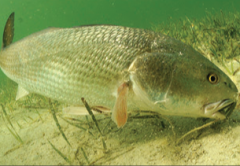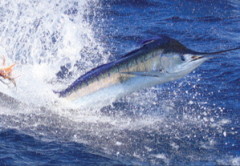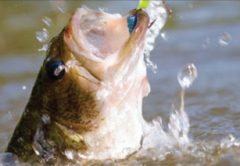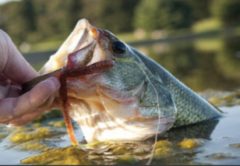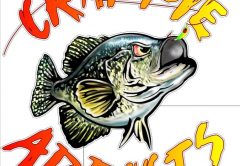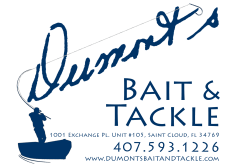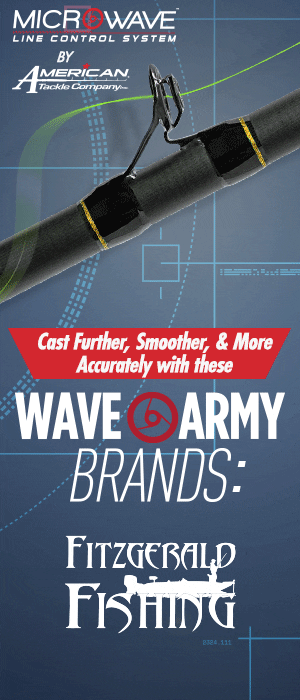
With the winter low water levels upon us, it can be difficult to reach the little grass that remains in Mosquito Lagoon. With nothing but miles of barren sand accessible in the central and south portions, many of the fish move closer to the inlet in the cuts and channels of the northern Lagoon. This month we continue targeting our main three, redfish, se- atrout, and black drum. They can be caught using traditional sight fishing methods of stalking and casting to fish you can see. You can blind cast likely areas using lures or you can use a variety of natural baits.
During the winter, the most com- mon natural bait is live or dead shrimp. With far fewer of the bait stealing pinfish around, you shrimp may last long enough to entice a large predator. While some like to float their shrimp under a bobber, I prefer to fish them on the bottom using a jighead or a hook and weight.
Those anglers who enjoy sight fishing either by wading, paddling, or poling can’t go wrong with a 3” DOA CAL shad tail lure on a jighead. Something about the rapid fall of these baits and the way the bounce on the bottom that make the redfish strike them aggressively. Seatrout of all sizes will readily grab them as well. Look for schools of redfish holding in depressions, holes, and deeper cuts if the weather is cold. During the warmer spells, they may be in water barely deep enough to cover them.
Winter always brings plenty of windy and cloudy days that make sight fishing impossible. On days like this, the same 3” shad tail or a weedless jerkbait can be used for blind casting likely areas. Look for places where the wind is blowing water around the point of an island and you are liable to find a redfish or big trout staged there. Sandbars, cuts, troughs and deep holes are also locations where fish will gather.



